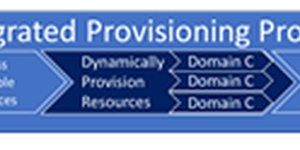
Whitepapers
Middle-Mile Networks Capacity Requirements for Fixed Broadband
As service providers and utilities build out rural broadband networks, an important consideration is the network capacity required in middle-mile rings as the number of subscribers grows and as network traffic continues to increase. ACG Research has built a detailed traffic model that accounts for network traffic driven by bandwidth-intensive applications. Our model accounts for device penetration, application data rates, concurrency, and traffic growth. We project that average rural traffic per household during the busy period will grow from 13 Mbps in 2021 to 20.1 Mbps in 2025. This drives the requirement for 200 Gbps middle-mile rings by Year 2 (2022) and 400 Gbps middle-mile rings by Year 4. It is critical that service providers plan their network architecture to allow for bandwidth growth in middle-mile rings to support higher capacities.
Contact Peter Fetterolfat pfetterolf@acgcc.com to developing your business case.
You might like similar whitepapers


AUTOMATING 5G ACCESS DEPLOYMENTS

Meet Market Needs with Software-Enabled Solutions

Segment Routing: An ACG Research Whitepaper

Broadband Access Transformation

Nuage/ALU on the VNS Solution in an SP Context

An Approach to Offering Profitable Managed Network Services

The Economic Benefits of Distributed Broadband Services

THE BUSINESS CASE FOR ADAPTIVE IP

The Evolution of Broadband Traffic: A Forecast for the Americas, EMEA, and APAC Regions

Orchestrating Dynamic Enterprise Services

Coriant Groove™ G30 Disaggregated Platform Update: Market Impact Report

Lenovo: Data Center Switch Solutions for Enterprise Data Centers

Itential Vendor Profile: Automation and Orchestration for Multi-Domain Networks

Simplifying IP Networks

The Driving Factors behind the Telecommunications Shift to Cloud Metro Networks

Key CommSoft Learnings from #MWC19

Delivering Policy Continuity at Scale in Cloud IT and Managed Network Services

The Economic Benefits of the Ciena Virtualized Edge Solution

Building the Business Case for AI in Wireless Networks: Juniper Mist AI TCO Report

Huawei ADN Solution Approach to Implementing Autonomous Networks

A TCO Comparison of Private WANs vs Managed Network Services for Enterprises

Huawei Autonomous Driving Network: Standards-Based but Differentiated

Tunnel-Based versus Tunnel-Free SD-WAN

THE ECONOMIC BENEFITS OF IP TRANSPORT AT 400G

Using Open Virtual RANs in 5G

5G Service Assurance: The Case for AIOps

MODERNIZING THE CABLE SERVICE DELIVERY INFRASTRUCTURE

5G Service Assurance: The Case for AIOps

THE POWER OF DIFFERENTIATION: BUILDING BROADBAND FOR 2021 AND BEYOND

Hybrid Networks: Integrated Provisioning for Virtual and Physical Networks

The Missing Guide in SP Managed Services Profitability

Global Pricing for SD-WAN

Next-Generation Cloud Metro Network Requirements and Architectures

Comparing Broadband Network Architectures in the Evolving Connectivity Landscape

The Economic Benefits of Virtual Edge Services

The Economic Benefits of Juniper Apstra and CN2 in a Modern 5G Network

Disruption Propelling Massive Changes in Video Market

The Right Container Platform(s) for Modern OSS and BSS

The TCO Benefits of Dell’s Next-Generation Telco Servers

Virtualization Journey: Cable Companies Are on Their Way

Accelerating Revenue and Innovation in CSPs' Distributed Clouds

The Economic Benefits of Automating Capacity Optimization in IP Networks

Achieving End-to-End Intelligence in the Cable Access Network

Middle-Mile Networks Capacity Requirements for Fixed Broadband






